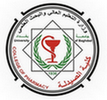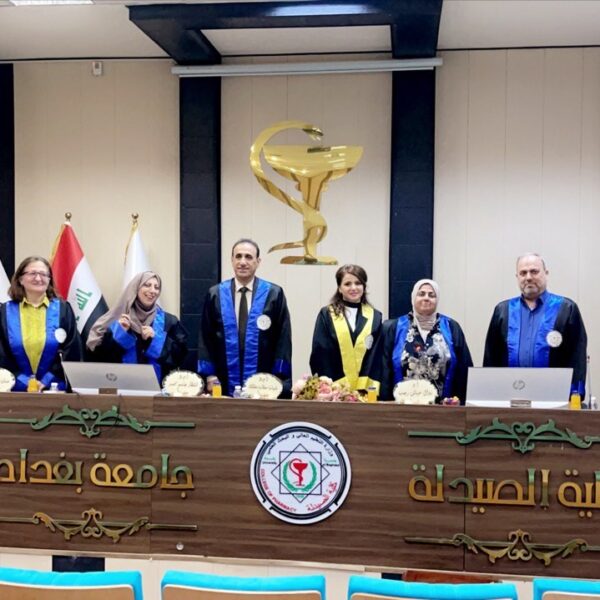The Faculty of Pharmacy discussed the preparation and Characterization of Voriconazole as a solid lipid ophthalmic dosage form by Rafah Khamis and his supervisor, Assist. Prof. Dr. Fatima Jalal Jawad, in the department of Pharmaceutics. The aim of the study was to investigate the effect of different types and concentrations of solid lipid and surfactant on the properties of the prepared solid lipid nanoparticles. Voriconazole solid lipid dispersion was prepared by the emulsification/ultrasonication method at a drug, using three different solid lipids: Tristearin. Stearyl alcohol and Palmitic acid are two types of surfactants: Tween 80 and SLS as modals and co-surfactants as stabilizers, poloxamer 188. The selected formula was according to parameters of particle size, polydispersity index, zeta potential, entrapment efficiency, loading capacity, and in-vitro drug release. A number of formulas (F20, F22, F25, and F27) were studied to choose the appropriate formula, and it was lypholization. To describe the status of voriconazole and lipid modification in the solid state, differential scanning calorimetry, Fourier transform infrared spectroscopy, and powder X-ray diffraction were utilized. Scanning electron microscopy and Transmission electron microscopy were used to analyze particle form and surface morphology. The optimized formula (F27) containing voriconazole (1%), Palmitic acid (1.5%), Tween 80 (5% w/w), and 0.1% poloxamer 188 had a mean particle size, zeta potential, and entrapment efficiency of (143.97.95) nm, (-29.30.01) mV, and (92.410.31), respectively. The compatibility and crystallinity investigation revealed that voriconazole was compatible with the other excipients used in the research, and the drug molecule was found to be in an amorphous state within the lipid matrix. Examination of particle shape and surface morphology demonstrated almost spherical nanoparticles. The in vitro drug release profile of formula (F27) illustrates a biphasic pattern in which a burst release is followed by a persistent phase over a 24-hr. release period, with an estimated percent of the medication reaching close to 86% with the Higuchi model. The best SLN dispersion formula (F27) was incorporated in carbapol 934 base with different concentrations: 0.5, 1, and 1.5% (w/v) as a gelling agent. The prepared gel formulas were evaluated for their appearance, pH, drug content, and in vitro dissolution at pH 7.4. The optimized gel formula was characterized for ex-vivo permeation studies, eye irritation studies, and antifungal activity studies. The 0.5% carbapol934 gel was found to be a suitable carrier for the SLNs (SG1) and showed controlled in-vitro release of VRC, a high Ex-vivo permeation study (Enhancement = three fold), no eye irritation, and good inhibition of fungal i growth in the case of SLN gel in comparison with plain gel. In conclusion, solid lipid dispersion gel formulation is considered an advance in drug delivery for acular preparation and absorption, reaching the drug with its carrier to the site of its action in the acular system as well as increasing the permeability of drugs through the cornea.




